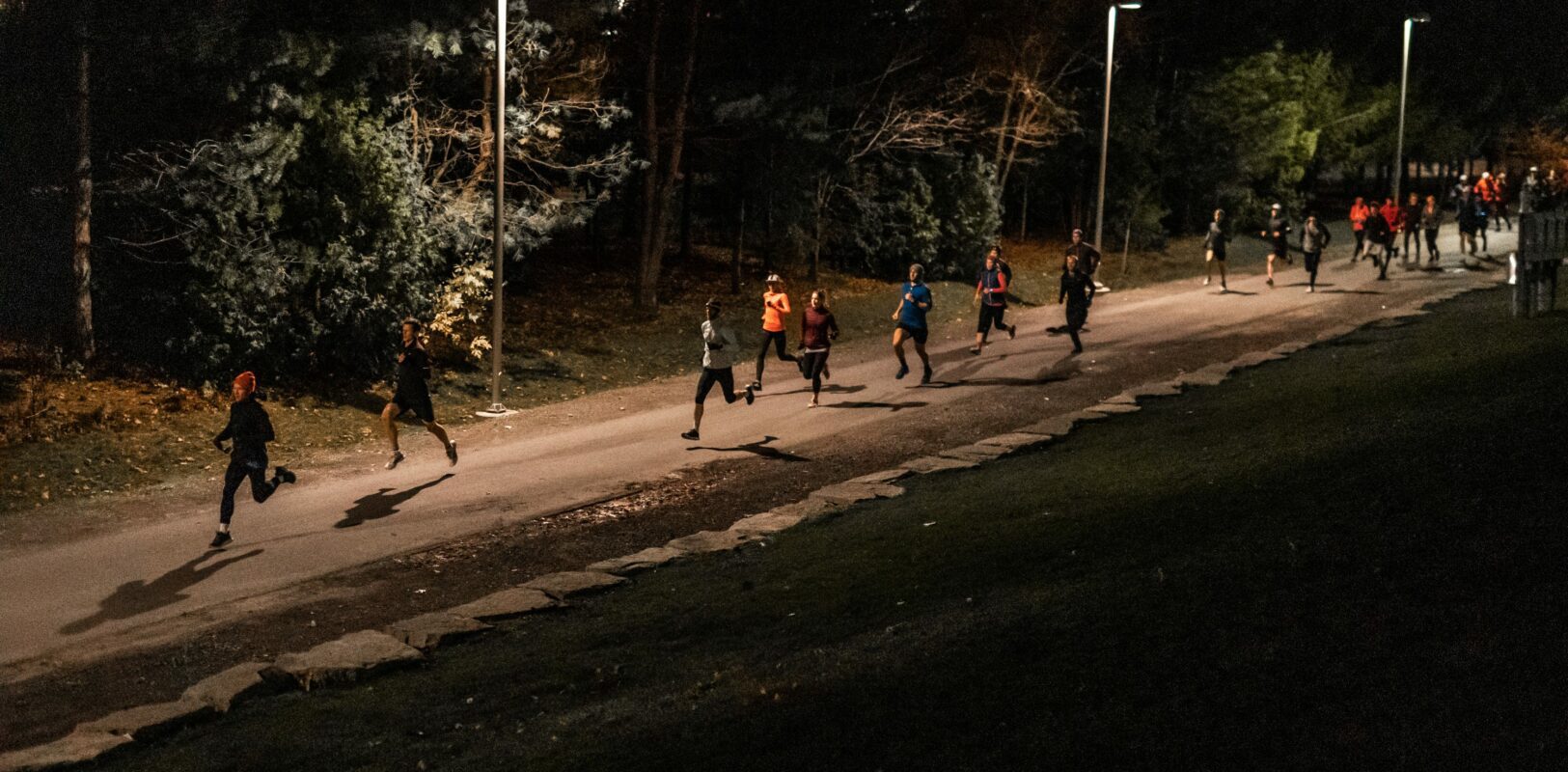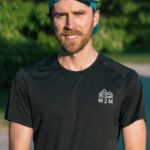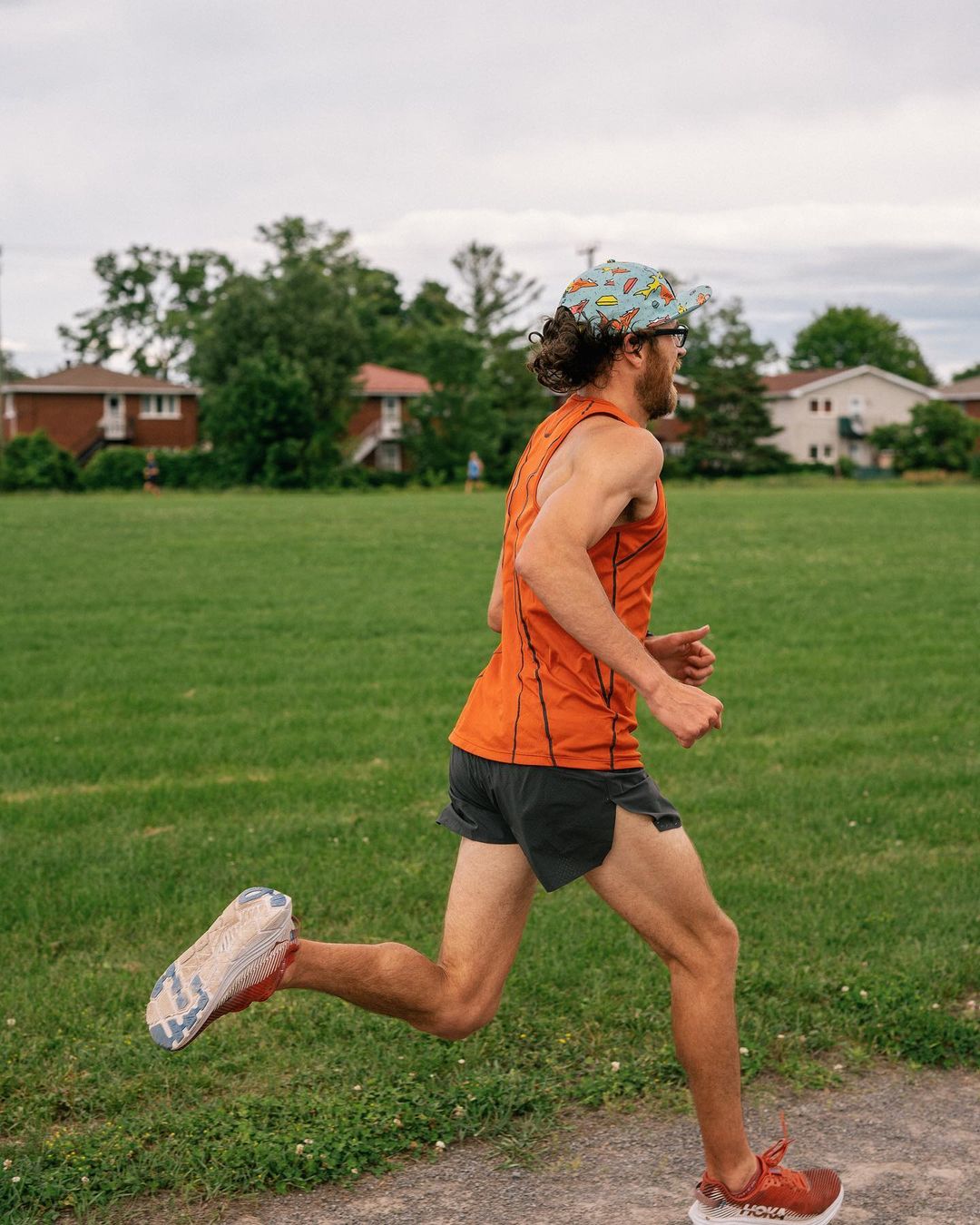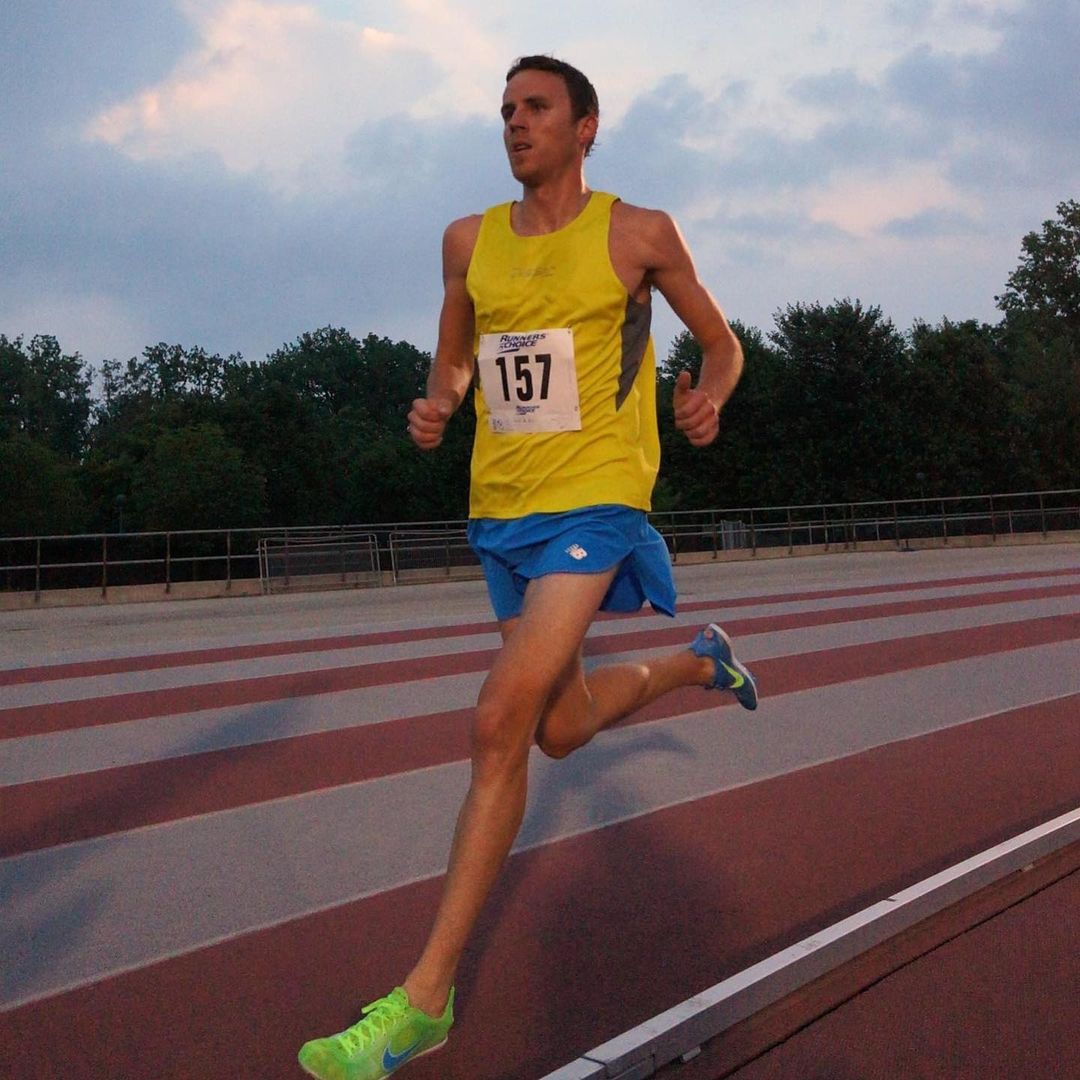
Don’t Force your Form: Tips to Improve your Running Economy
Chiropractor and Mile2Marathon Coach, Garrett de Jong, shares his experience on improving his running form and offers a few tips on how you can improve yours.
When I was in second year university I won a gag award at our varsity track banquet for ‘worst running form’. We all had a good laugh and I didn’t take it too seriously as I was one of the faster runners on the team. But as I trained to improve my times I began to think more and more about my running form. I would consciously do weird things like pull my heels up to my butt and point my toes because that’s how many top runners looked. Sound familiar anyone?
Injuries followed and results plateaued. From IT band syndrome to stress fractures I spent way too much time not running. My solutions? Try harder obviously. Try to consciously improve my form even more. Did I get the desired results? Nope!
How are we supposed to improve without trying? Well some things have evolved to need less conscious interventions than we are comfortable with. One of these things is human movement. Human movement is incredibly complex. Let me say that again: human movement is incredibly complex! To consciously control something like your foot strike, doesn’t make any sense. Can you imagine needing to consciously think about having good running form while trying to run away from a tiger?!
The body knows how to move best. It has had millions of years of evolution to figure it out. Even if you are running with a ‘dysfunction’, you are doing this for a reason. It is actually serving a function. Your running stride is most likely the most efficient form for you right NOW. But It is most likely NOT your best efficiency possible (you can probably blame the conveniences of modern lifestyles for this). It helps to think of running form as running economy. A good running economy require less energy/oxygen for locomotion. Your running economy might not be great and may require more energy but it is the best you’ve got. We are hardwired to save energy (that’s why we slouch so much!). Some people appear to have good running form but have terrible running economy because they require so much energy to ‘look good’.
I tell many of my clients that if I were to get them running like Mo Farrah tomorrow they would be worse off because their bodies are not ready for that and it would take them an immense amount of energy to do so (not to mention actually increase their risk of injury!).
Your running strides is most likely the most efficient form for you right NOW. But It is most likely NOT your best efficiency possible (you can probably blame the conveniences of modern lifestyles for this).
Your form is the result of your environment and it takes time to adapt. Truly improving your running form also does not happen consciously. Although, you can consciously control your environment. Change your environment and your environment will change you.
Here are my tips on improving your running form:
- Run more and run consistently. But avoid too much too soon! The body adapts to the ‘goldilocks’ amount of stress, not too much, not too little!
- Run less. The foundation of a good runner starts with being a good human mover– check out my free PDF for some great fundamental strength and mobility!
- Run differently. The body craves variability, run on a variety of surfaces with a variety of speeds.
- Let me happen, don’t make it happen. Many runners have a big problem doing this. Many of us are ‘type A’ – we like to be in control and are rewarded for working hard to ‘make’ things happen, but like many complex things in life we are in certain ways better off to ‘let’ it happen!
I can personally attest to these tips. Once I began working on some stubborn areas of restriction in my body, once I stayed consistent and injury free in my training plan, and once I began running on roads AND trails did I improve my times and stayed healthy! I also beat all my university times! I still have lots of work to do and always will but I am embracing the process and focusing less on results.
These concepts are not unique to running but apply to all of human movement. If anyone is struggling or interested in improving their movement environment, you know where to find me! I also offer comprehensive gait analysis to not simply show you how you run but to investigate WHY you run a certain way AND to determine REAL and PRACTICAL solutions to improve.
Thanks for reading. As always,
Move better, experience more.
Garrett
 Garrett de Jong
Garrett de Jong
